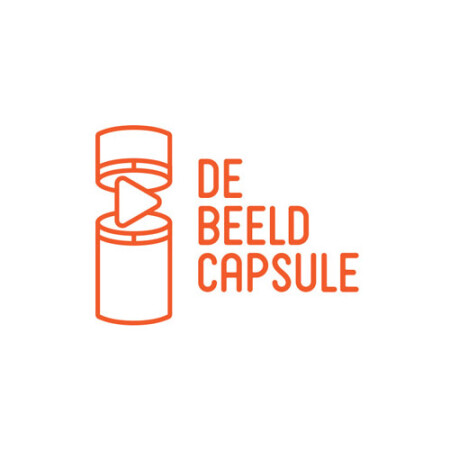VIAA launches Image Capsule to 2117: this is how we want to remember leisure
27 Oct 2017Which images are part of our collective memory? Which footage is still relevant in 100 years from now and adequately reflects how we enjoyed our leisure time this past century? In the course of the past month, visitors of www.debeeldcapsule.be chose their personal favourites.
Today, on the UNESCO World Day for Audiovisual Heritage, the Flemish Institute for Archiving (VIAA) is disclosing the five most popular movies as the Image Capsule 2117. By means of the Image Capsule, VIAA and its 29 partners want to highlight their ambition for Flanders: to cherish the wealth of audiovisual archive material, bring it to life and conserve it for the future.
The Image Capsule zooms in on the theme of ‘leisure’. Over the last month, almost 27,000 unique visitors visited the site, where they watched the videos over 75,000 times, worth 500 hours of viewing pleasure. Nico Verplancke, Director of VIAA, is very happy with the campaign and the visitors’ choices: “The five most chosen fragments constitute a story in themselves.”

For instance, thanks to the introduction of paid holidays and the 40 hours working week in 1936, the working Belgian obtained more leisure time. During that period, the worker also discovered the coast as a holiday destination. Later, the advent of the car reinforced this, including mobility problems. Many people also remember Ostend as the point of departure and arrival for ferries to the United Kingdom. In the last century, travelling abroad became increasingly popular.
Footage shows us how our life and our leisure have changed in recent years, but have at the same time fundamentally remained the same. Nowhere in the world, were there as many cycling races as in our country, and even today cycling is very popular. The popularity of the ‘criterium’ may be waning, but cycling tourism sees an unprecedented boom.
The last century also saw a democratisation of the film and video media. This forms a bridge with today. “Children, adolescents and adults now film just about everything,” says Nico Verplancke. “They edit and share their movies with each other and with the world. At the same time, these recordings remain fleeting, time-related and have a limited retention period. This makes it even more important to safeguard relevant images for the future right now. VIAA and its partners are committed to doing so, but finally this concerns a type of collective memory. This is why we want to reach and involve as many people as possible.”
These are – in alphabetical order – the five most often chosen fragments, which the Image Capsule is launching to the year 2117 today:
Paid holiday – from the archives of the AMSAB – Institute for Social History
Don't see a video? Please check your cookie settings so we can show this content to you too.
Edit your cookie preferences hereCan’t see the video? Please check that your cookie settings allow us to show you this content. You can change your cookie settings at the bottom of this page. Click on ‘Change your consent’ and select ‘Preferences’ and ‘Statistics’.
The criterium – from the archives of the FelixArchief
Don't see a video? Please check your cookie settings so we can show this content to you too.
Edit your cookie preferences hereCan’t see the video? Please check that your cookie settings allow us to show you this content. You can change your cookie settings at the bottom of this page. Click on ‘Change your consent’ and select ‘Preferences’ and ‘Statistics’.
Ostend-Dover by ferry – from the archives of Focus-WTV
Don't see a video? Please check your cookie settings so we can show this content to you too.
Edit your cookie preferences hereCan’t see the video? Please check that your cookie settings allow us to show you this content. You can change your cookie settings at the bottom of this page. Click on ‘Change your consent’ and select ‘Preferences’ and ‘Statistics’.
Camera. Lights. Action! – from the archives of the Huis van Alijn
Don't see a video? Please check your cookie settings so we can show this content to you too.
Edit your cookie preferences hereCan’t see the video? Please check that your cookie settings allow us to show you this content. You can change your cookie settings at the bottom of this page. Click on ‘Change your consent’ and select ‘Preferences’ and ‘Statistics’.
Slow traffic to the coast – from the archives of the VRT
Don't see a video? Please check your cookie settings so we can show this content to you too.
Edit your cookie preferences hereCan’t see the video? Please check that your cookie settings allow us to show you this content. You can change your cookie settings at the bottom of this page. Click on ‘Change your consent’ and select ‘Preferences’ and ‘Statistics’.
Participating partners
ADVN, Amsab-ISG, AMVB, AVS, deSingel, FelixArchief, Focus-WTV, Het Huis van Alijn, hetPaleis, KADOC - KU Leuven, Letterenhuis, Liberaal Archief, Medialaan, MIAT, Museum Dr. Guislain, Provinciaal Archief West-Vlaanderen, RINGtv, ROB-tv, RTV, Sportimonium, Stadsarchief Brugge, Stadsarchief Kortrijk, Stadsarchief Sint-Niklaas, Stadsarchief Turnhout, STAM & Archief Gent, TV Oost, Universiteitsarchief Gent en VRT
